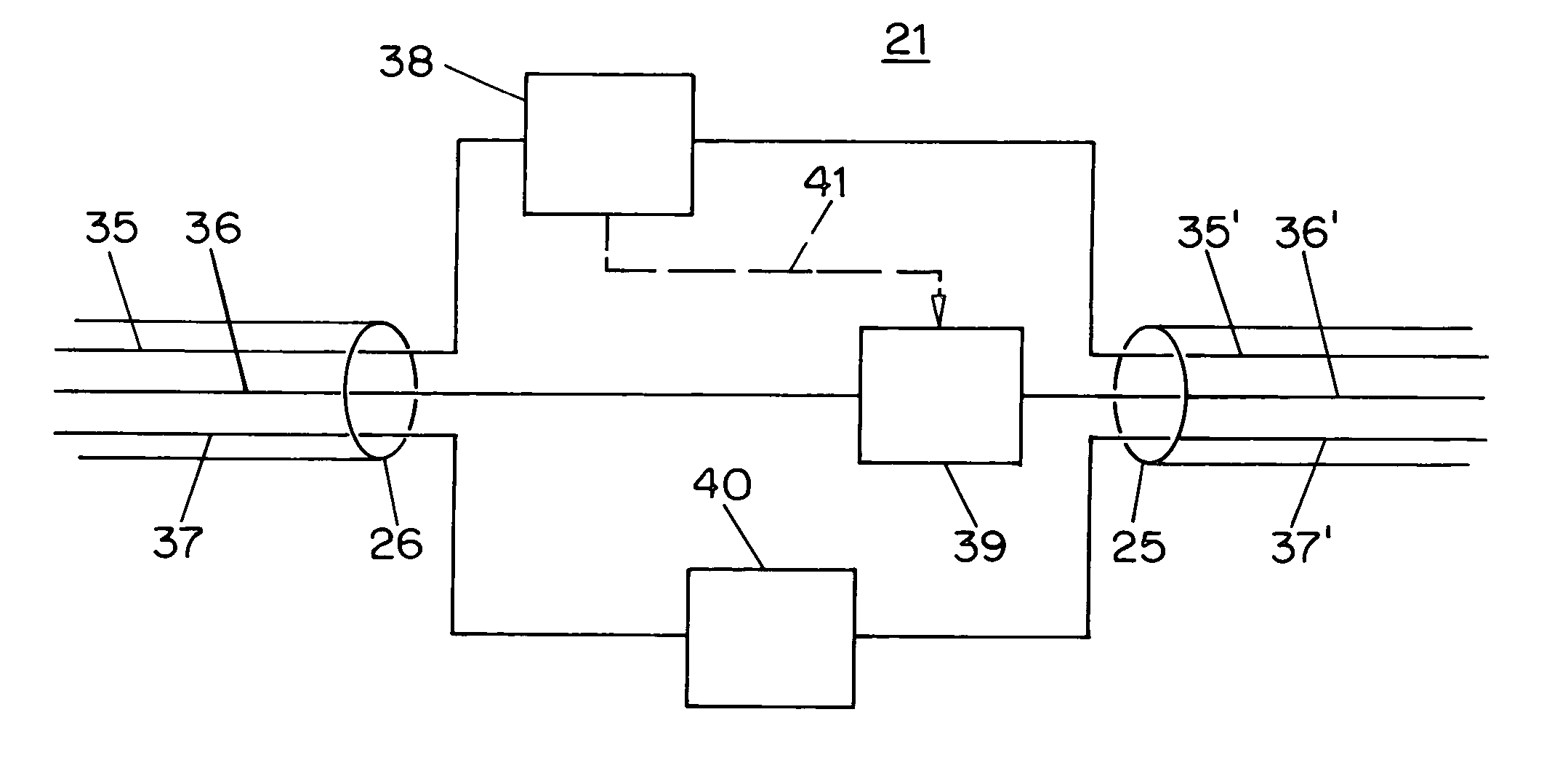Testing device
a technology of testing device and test equipment, applied in the field of test equipment, can solve the problems of reducing or eliminating competition, unable to detect the loss of ip standard, and relatively rare compatibility problems and standards-compatibility problems,
- Summary
- Abstract
- Description
- Claims
- Application Information
AI Technical Summary
Problems solved by technology
Method used
Image
Examples
Embodiment Construction
[0051] Turning first to FIG. 1, what is shown is a functional block diagram depicting use of a test device 21 according to the invention. The test device 21 sits between nodes 20 and 22. So far as nodes 20 and 22 are concerned the connection is (or is assumed to be) “transparent” in the sense that each of nodes 20 and 22 will be under the impression it is communicating directly with the other. A console 23 communicates with the test device 21, for example through a console port 24. Nodes 20 and 22 connect with ports 26 and 25, respectively, of the test device 21.
[0052] Those skilled in the art will appreciate that the term “port” in this context will very often refer to a physical port. But in some embodiments, the ports 26 and 25 could be distinct virtual circuits or VLANs (virtual LANs) within a single physical port.
[0053] Test device 21 is portrayed in some level of internal detail in FIGS. 7 and 8 as will now be described. FIG. 7 is a functional block diagram of an embodiment ...
PUM
 Login to View More
Login to View More Abstract
Description
Claims
Application Information
 Login to View More
Login to View More - R&D
- Intellectual Property
- Life Sciences
- Materials
- Tech Scout
- Unparalleled Data Quality
- Higher Quality Content
- 60% Fewer Hallucinations
Browse by: Latest US Patents, China's latest patents, Technical Efficacy Thesaurus, Application Domain, Technology Topic, Popular Technical Reports.
© 2025 PatSnap. All rights reserved.Legal|Privacy policy|Modern Slavery Act Transparency Statement|Sitemap|About US| Contact US: help@patsnap.com



